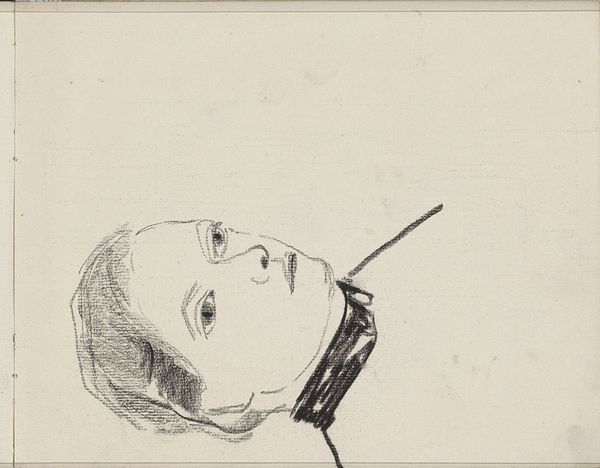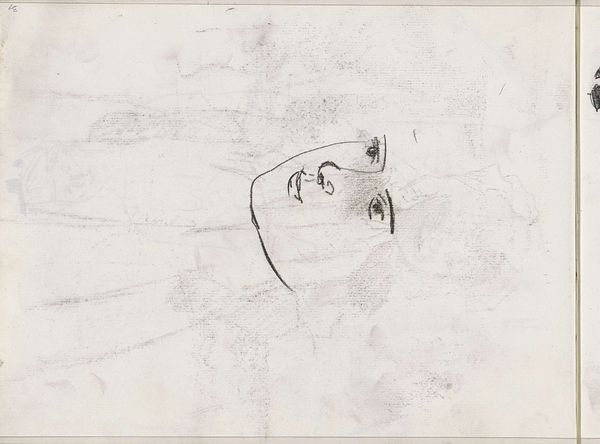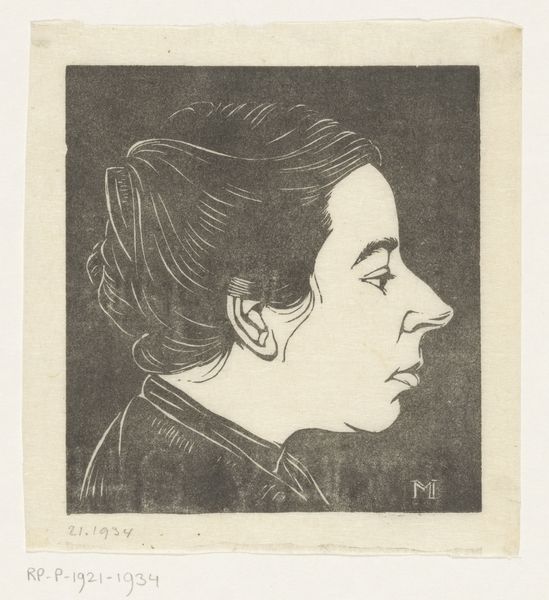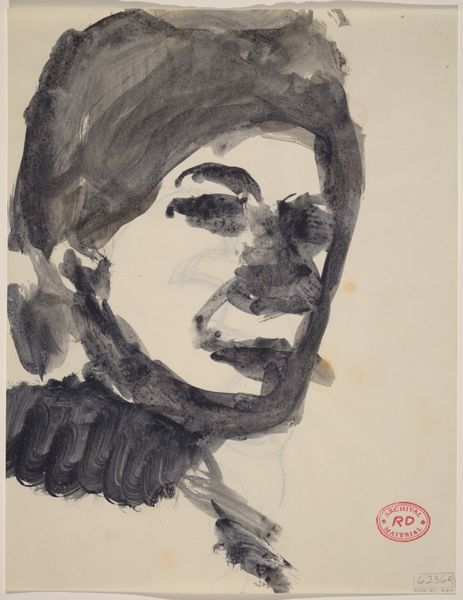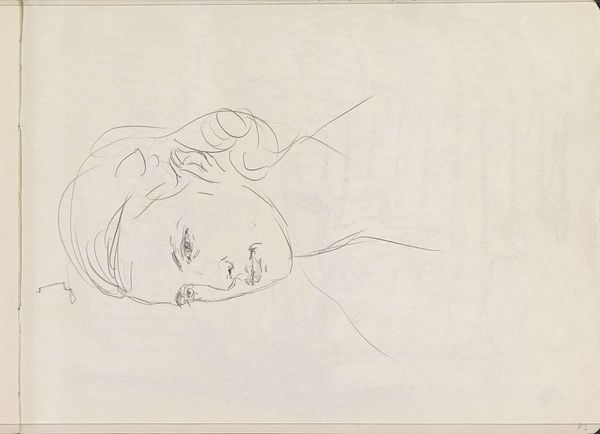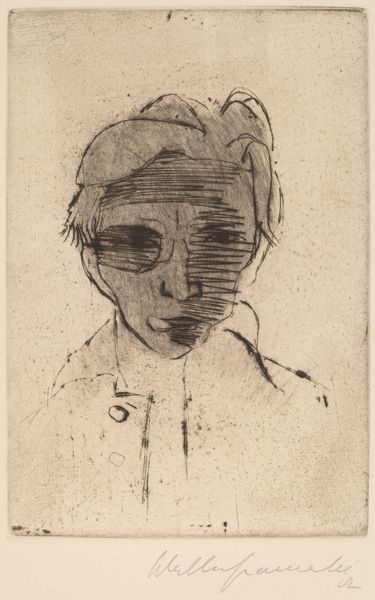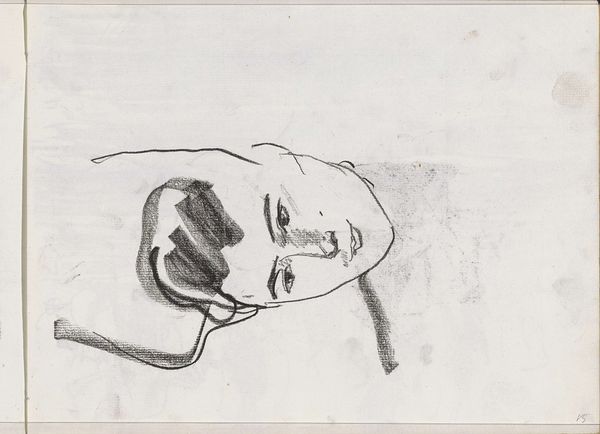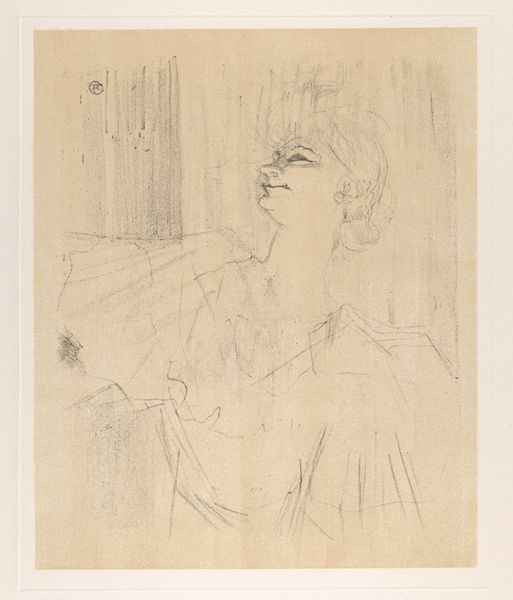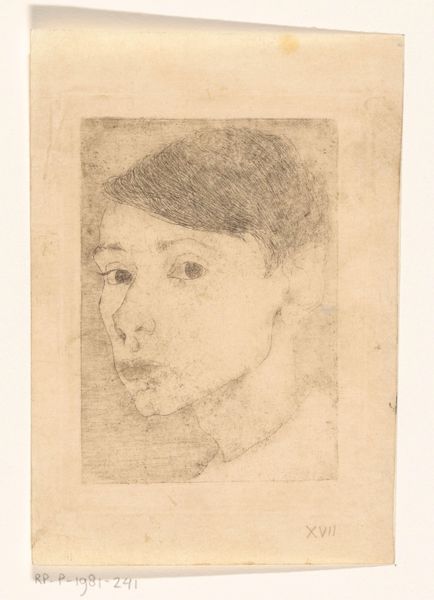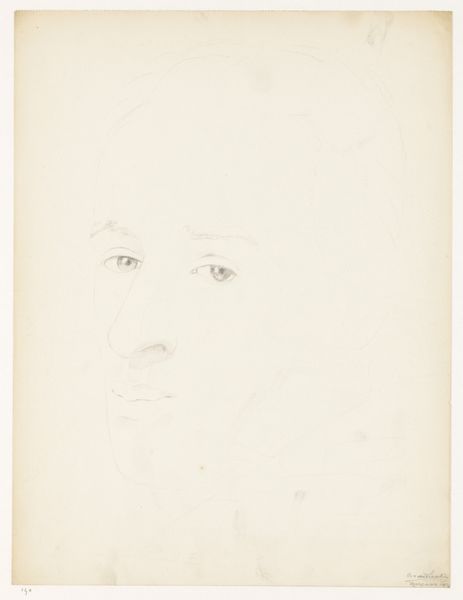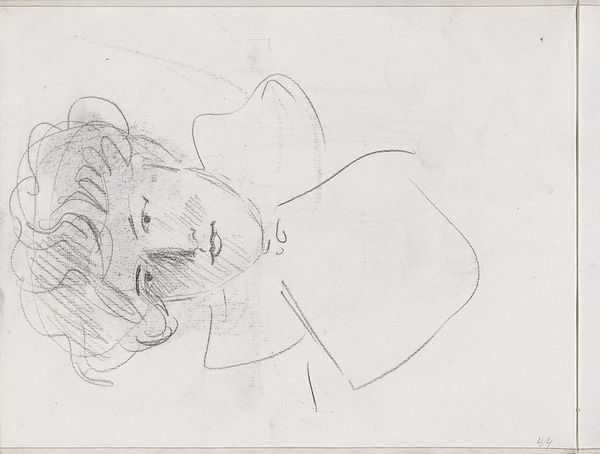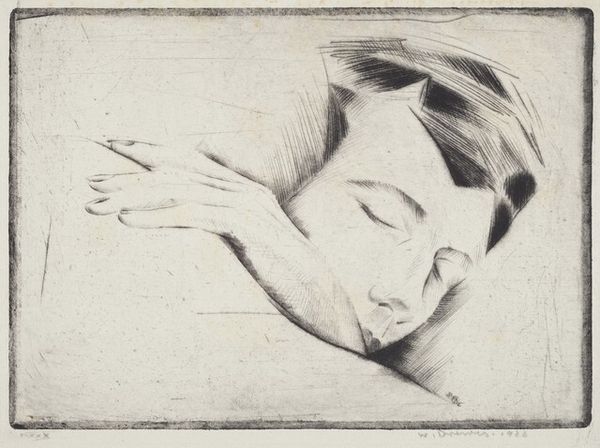
drawing, pencil
#
portrait
#
pencil drawn
#
drawing
#
self-portrait
#
charcoal drawing
#
pencil drawing
#
pencil
#
portrait drawing
#
realism
Copyright: Public domain
Editor: Here we have Jan Mankes's "Self-portrait, three-quarters to the left," a pencil drawing from 1910. There's a vulnerability to it; a very personal and somewhat melancholic mood seems to emanate from this self-representation. What stands out to you when you look at this portrait? Curator: Immediately, I notice how Mankes uses light and shadow not just to define form, but also to suggest an internal landscape. The face, tilted slightly downward, evokes a contemplative, perhaps even burdened state. This links back to traditional iconography where the downward gaze signifies humility, piety, or even grief. Do you think that applies here, despite this being a self-portrait and not a religious icon? Editor: That's a fascinating comparison! I hadn’t considered those earlier traditions, but now that you mention it, it adds a whole new dimension to the work. Though, in contrast to those religious themes, the intense detail and realistic style focuses on Mankes's individuality. Curator: Exactly. The "realism" emphasizes an introspective psychological exploration. What’s particularly compelling to me is the symbolic power that the artist projects on themself, turning the artist into an iconographical subject in the artist’s own worldview. His visual language becomes a mirror reflecting and refracting deeply embedded cultural symbols. I wonder if he intended the viewer to bring so much historical baggage to the experience? Editor: Possibly. Or perhaps these are simply archetypes that subconsciously inform both the artist and viewer. This reminds me that even simple pencil strokes can echo throughout history and create such powerful meaning. Curator: Precisely! Visual culture connects us through time and experience.
Comments
No comments
Be the first to comment and join the conversation on the ultimate creative platform.
